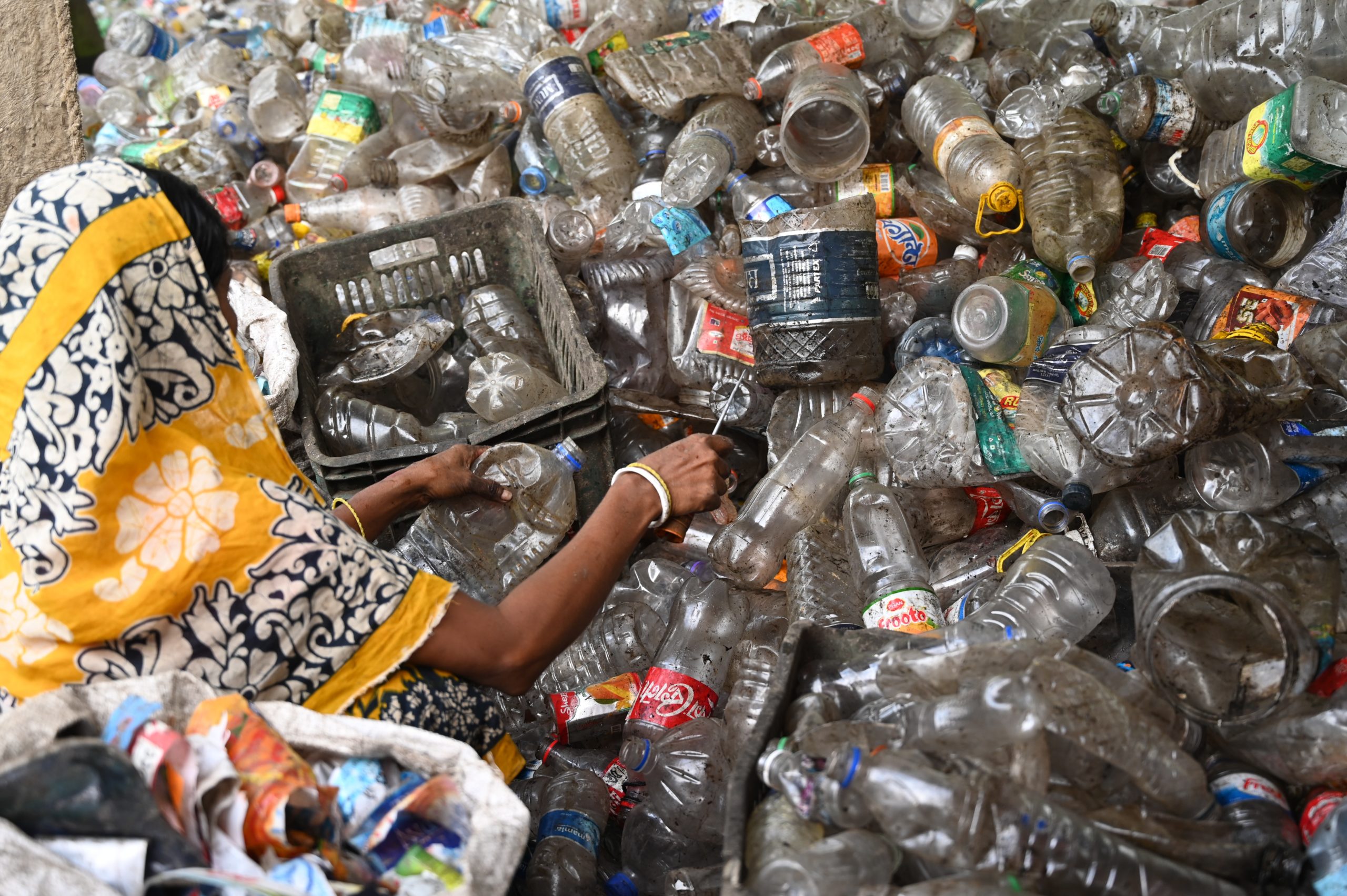
Representational image by Mumtahina Tanni on Pexels.
Plastics have a high calorific value, with polymer energy varying from 62 to 108 MJ/kg (including feedstock energy) which is much greater than paper, wood, glass, or metals (with exception of aluminum). Read on to learn more about plastic recycling in India.
Q1. How is plastic recycled in India generally speaking?
Plastic recycling typically entails “downcycling” into inferior products. The first step in the procedure is separating the plastic waste (PW) based on the color, transparency, hardness, density, and opacity of the scrap. The material is then delivered to granulators where it is ground and mechanically processed into granules. These granules are used by converters to create completed plastic goods.
The majority of these facilities (granulators and converters) are typically found in slums where scrap is stored, and washing is done in open drums. These industries also employ obsolete and polluting technologies.
Q2. What does the recycling process entail?
Depending on the quality of the product produced from the recycling of the waste, PW is often recycled or reprocessed through one of five different processes: upgrading, recycling (open or closed loop), downgrading, waste-to-energy plants, dumping, or landfilling. The majority of Indian states are involved in recycling, building roads, and co-processing in cement kilns, with polypropylene (PP) and polyethylene (PE) polymer materials having the highest reprocessing capacity among reprocessors.
Q3. How much plastic waste is recycled in India?
In India, 5.5 million metric tonnes (MMT) of plastic are recycled each year, according to the PlastIndia Foundation, the umbrella organization for associations, organizations, and institutions related to plastics and the plastics industry. This amounts to roughly 60% of the total plastic waste produced in the nation; 70% of it is recycled at facilities that are registered, 20% by the unorganized sector, and the remaining 10% is recycled at home3. The remaining 40% of the nation’s total plastic waste is left uncollected, littering and clogging our drains, waterbodies, and land.
There are no recycling requirements for plastics in India. The majority of recycled goods are not suitable for packaging food. Plastics typically deteriorate with each recycling.
Q4. Why is plastic recycling such a concern?
India is currently ranked 12th among the nations that misuse plastics, but it is anticipated that by 2025, it would hold the fifth spot. Therefore, it is now urgent to recycle, scale up, or reprocess PW in order to stop this misuse of plastics and lessen the harmful effects that plastic consumption and usage have on the environment.
Plastic recycling offers a huge potential to reduce the negative effects of plastic use and consumption. Recycled plastics can help us use fewer fossil fuels by being used in downstream applications. According to some research, recycling a tonne of plastic waste results in savings of about 3.8 barrels of oil.
Q5. How many plastic recyclers exist in India?
In India, there are about 600,000 people directly employed by over 3,500 organized and over 4,000 unorganized recycling units.
Q6. What factors impact the price of plastic scrap?
The price of crude oil and the passing of each season are two of the major factors that affect the price of plastic scrap. Plastic scrap prices decrease when crude oil prices are low. Prices are often higher in the winter (relative to the summer), and the monsoon season has a significant impact on how the market functions because all trading activity is curtailed. Due to water seepage inside the bags, the product gets wet and loses its bulk mass, making it unsellable.
Q7.What are the opportunities available in plastics recycling in India?
In order to effectively address India’s PW issue, there are significant prospects for mechanical recycling, chemical recycling, waste-to-energy methods, and bio-based polymers. On the other hand, polyethylene terephthalate, nylon, and polyurethane appear to be the most competitive materials for chemical recycling overall. Polyethylene (PE), Polypropylene (PP), and Polystyrene are the three primary polymers with greater calorific values appropriate for energy generation as compared to traditional fossil fuel energy sources. Additionally, multi-sensor artificial intelligence, blockchain technology, and digitization for PW recycling may prove to be the waste flow chain and its management of the future for India. In general, a collaborative supply chain of virgin and recycled material that is facilitated by technology is required for the development of a circular plastic economy in India.



